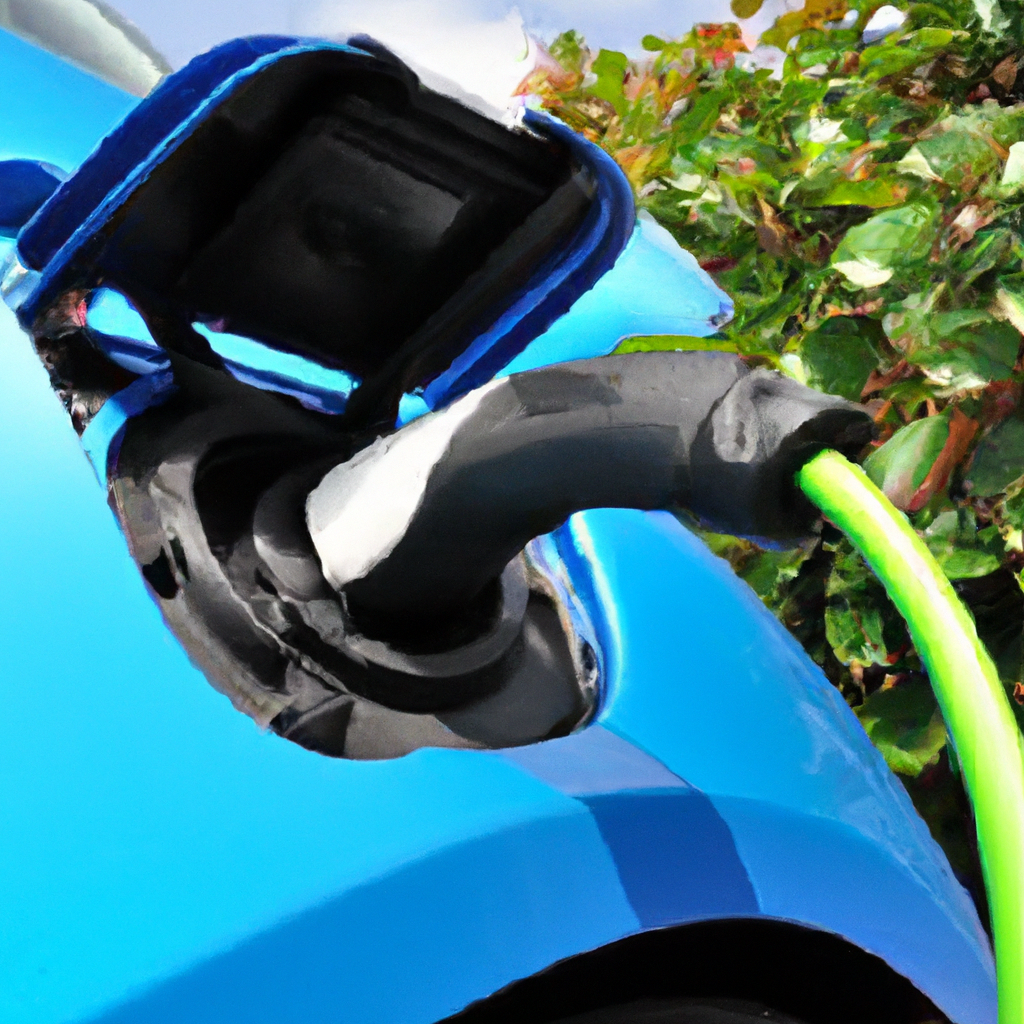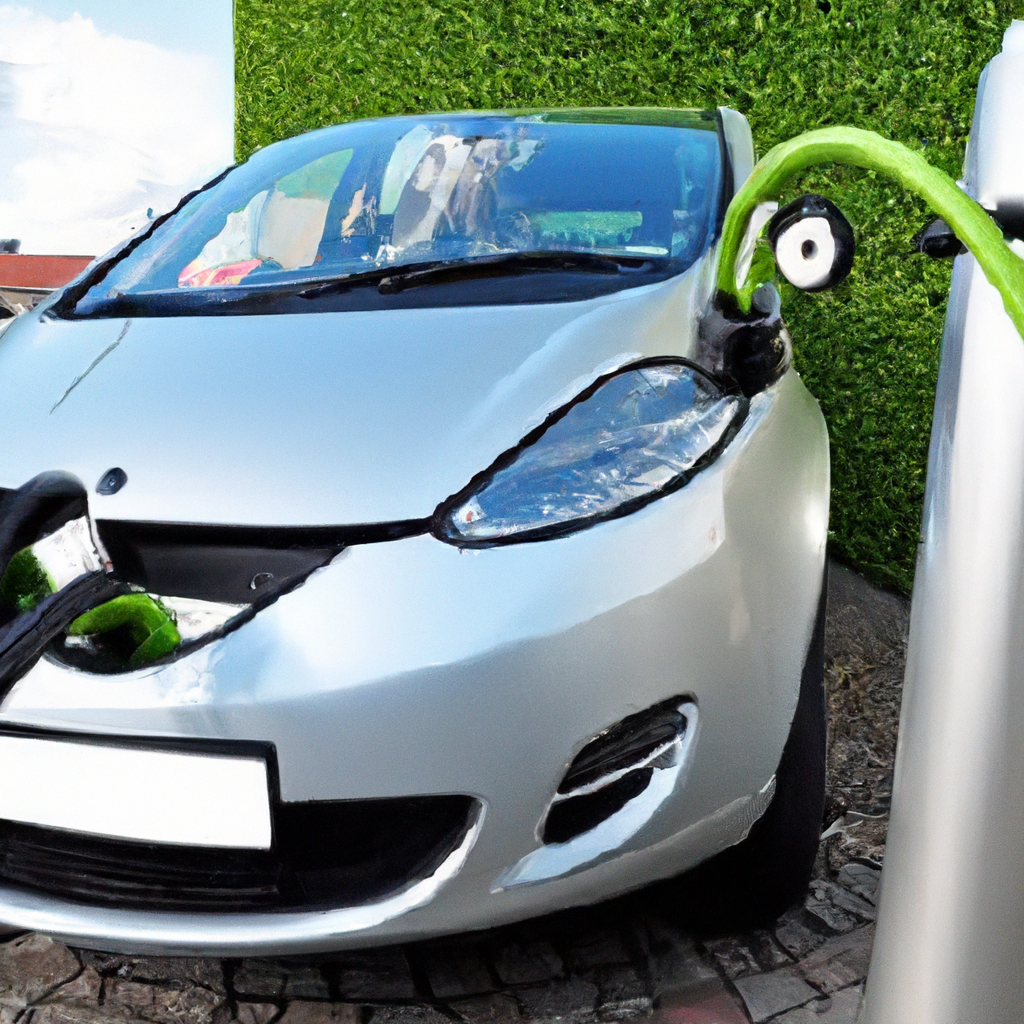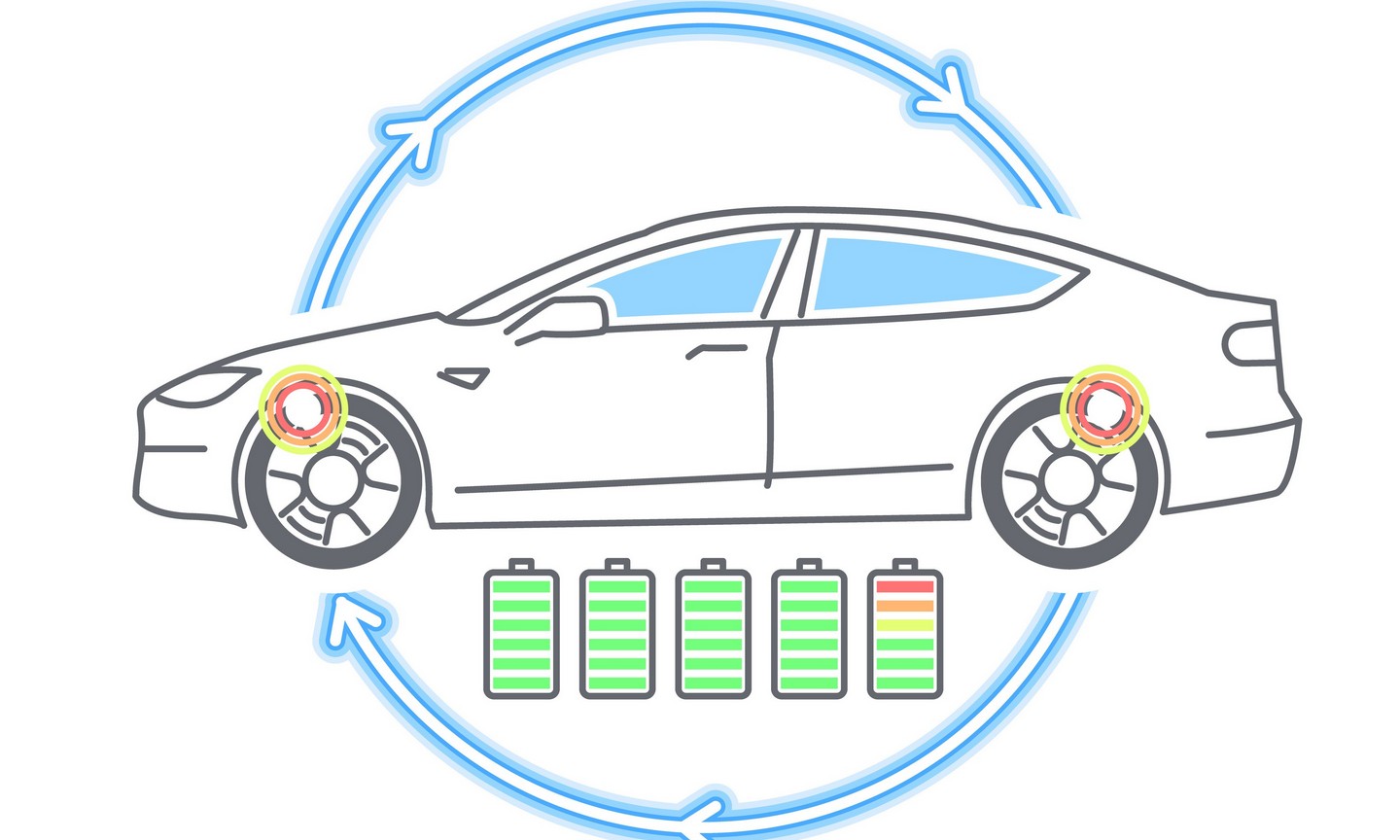The Impact Of EV Charging On Electricity Grids: Load Management
October 22, 2023 | by Jacob Kang

You’re an expert in EV chargers, and you understand the importance of Load management on electricity grids. In the world of electric vehicles, it’s crucial to consider the impact of charging on these grids. This article will explore the relationship between EV charging and load management, taking into account the challenges and solutions that come with integrating electric vehicles into our energy systems. With a friendly approach and informative content, we aim to entice readers to learn more about the fascinating topic of how EV charging affects electricity grids and the strategies employed to manage this load efficiently. So, let’s explore the world of EV charging and its impact on electricity grids!
The Impact of EV Charging on Electricity Grids: Load Management
Electric vehicles (EVs) have gained significant popularity in recent years due to their environmental benefits and advancements in technology. However, the increasing adoption of EVs poses unique challenges for electricity grids. One of the key concerns is load management, which involves balancing electricity supply and demand to ensure grid reliability and prevent overloads. In this article, we will explore the challenges faced by electricity grids, the role of EV charging in load management, various types of EV charging, load management strategies, technological solutions, policy considerations, and the benefits of load management.

Introduction to Load Management
Load management refers to the process of managing the demand for electricity in order to maintain the balance between supply and demand on the electricity grid. Traditionally, electricity generation has been relatively predictable, with a few large power plants supplying power to consumers. However, with the rise of renewable energy sources and the increasing penetration of EVs, the electricity grid is becoming more complex to manage. Load management plays a crucial role in ensuring grid stability, optimizing energy resources, and minimizing the need for expensive grid upgrades.
Challenges Faced by Electricity Grids
The integration of EV charging into electricity grids presents several challenges. Firstly, the charging patterns of EVs are often unpredictable, as they can be plugged in at different times and locations. This can lead to localized overloads, especially in areas with high EV concentration. Secondly, the charging demand of EVs can cause significant increases in peak electricity demand, potentially exceeding the grid’s capacity. Lastly, the grid infrastructure may require upgrades to accommodate the additional load from EV charging, adding to the overall cost and complexity of the grid.

The Role of EV Charging in Load Management
EV charging has a profound impact on load management due to its potential to significantly increase electricity demand. However, with effective load management strategies and technological solutions, EV charging can be integrated into the grid in a way that optimizes energy resources, minimizes grid stress, and benefits both EV owners and the utility companies. By strategically controlling and managing the charging patterns of EVs, load management ensures that the charging load is distributed evenly throughout the day, reducing the likelihood of overloads during peak demand periods.
Types of EV Charging
There are three main types of EV charging, each differing in terms of charging speed, infrastructure requirements, and suitability for different use cases.
1. Level 1 Charging
Level 1 charging refers to charging an EV using a standard household electrical outlet, typically rated at 120 volts. This type of charging is the slowest and provides the least power, with typical charging times ranging from 8 to 20 hours depending on the EV’s battery size. Level 1 charging is most suitable for overnight charging at home or for situations where longer charging times are acceptable, such as at workplaces or destinations.
2. Level 2 Charging
Level 2 charging involves the use of a dedicated charging station, typically rated at 240 volts. This type of charging provides faster charging times compared to Level 1, typically ranging from 3 to 8 hours depending on the EV’s battery size. Level 2 charging stations are commonly installed at homes, workplaces, and public charging stations, enabling convenient charging for EV owners during longer stops or overnight.
3. DC Fast Charging
DC Fast charging, also known as Level 3 charging, is the fastest charging option available for EVs. This type of charging utilizes high-powered charging stations that can provide up to 350 kilowatts of power, allowing for rapid charging in as little as 15 to 30 minutes, depending on the EV’s battery size. DC Fast charging stations are typically located along highways, enabling long-distance travel and minimizing charging time for EV owners.

Load Management Strategies
Several load management strategies can be employed to effectively manage the impact of EV charging on electricity grids. These strategies aim to incentivize off-peak charging, reduce peak demand, and balance the load across different times and locations.
1. Time-of-Use Pricing
Time-of-Use (TOU) pricing involves charging different rates for electricity consumption based on the time of day. With TOU pricing, electricity prices are higher during peak demand periods and lower during off-peak hours. This pricing structure encourages EV owners to charge their vehicles during off-peak hours, leading to a more balanced load on the grid. By aligning EV charging behavior with electricity supply, TOU pricing can help reduce peak demand and avoid overloads on the grid.
2. Demand Response Programs
Demand Response (DR) programs aim to shift or reduce electricity demand during periods of high grid stress or scarcity. These programs typically involve financial incentives or time-based rebates for EV owners who voluntarily adjust their charging times in response to grid conditions. By encouraging EV owners to participate in demand response events, grid operators can effectively manage peak demand and ensure grid stability during critical periods.
3. Vehicle-to-Grid Technology
Vehicle-to-Grid (V2G) technology allows EVs to not only consume electricity but also feed it back to the grid. In a V2G system, EVs act as mobile energy storage devices that can supply electricity during peak demand periods or when renewable energy generation is low. This bidirectional flow of electricity helps smooth out fluctuations in supply and demand, contributing to grid stability. V2G technology holds immense potential for load management, as it creates a symbiotic relationship between EV charging and grid demand.
Technological Solutions for Load Management
Several technological solutions can aid in effective load management and integration of EV charging into electricity grids. These solutions leverage advanced technologies and systems to optimize energy resources, store excess energy, and reduce reliance on fossil fuel-based power generation.
1. Smart Charging
Smart charging refers to the intelligent management of EV charging to optimize energy usage, avoid grid stress, and minimize charging costs. By utilizing communication and control systems, smart charging platforms can dynamically adjust and schedule charging sessions based on grid conditions, user preferences, and energy availability. Smart charging solutions can maximize the use of renewable energy, balance the load on the grid, and reduce the need for costly grid upgrades.
2. Grid-Scale Battery Storage
Grid-scale battery storage involves the use of large-scale energy storage systems to store excess electricity generated during periods of low demand or high renewable energy generation. These batteries can be charged during off-peak hours or when renewable energy generation exceeds current demand. During peak demand periods or when renewable energy generation is low, the stored energy can be discharged back into the grid, reducing the strain on the grid and ensuring a balanced load. Grid-scale battery storage systems complement EV charging by providing additional flexibility and stability to the electricity grid.
3. Renewable Energy Integration
Renewable energy integration plays a vital role in load management by diversifying the energy sources used for electricity generation. By increasing the share of renewable energy, such as solar and wind power, in the electricity mix, grid operators can reduce reliance on fossil fuel-based generation and decrease carbon emissions. Renewable energy can be leveraged to power EV charging infrastructure during renewable energy peak periods, reducing the overall energy demand from traditional power plants and minimizing the environmental impact.

Policy and Regulatory Considerations
Policy and regulatory frameworks play a crucial role in facilitating effective load management and seamless integration of EV charging into electricity grids. These frameworks should address the following considerations:
1. Grid Upgrades and Expansion
Policy measures should incentivize and support necessary grid upgrades and expansion to accommodate the increasing demand from EV charging. This may involve investing in infrastructure improvements, upgrading distribution systems, and deploying smart grid technologies. By proactively addressing grid limitations, policy initiatives can ensure the grid’s capacity to support widespread EV adoption and enable efficient load management.
2. Tariff Structures
Tariff structures need to align with load management strategies and encourage desired charging behavior. Time-of-Use tariffs can incentivize off-peak charging, while demand response programs can offer financial rewards for participating EV owners. Clear and transparent tariff structures will help EV owners make informed decisions about their charging habits and contribute to load management efforts.
3. System Planning and Coordination
Policy frameworks should facilitate coordination between stakeholders, including utilities, grid operators, charging infrastructure providers, and government agencies. Effective system planning and coordination can ensure the deployment of adequate charging infrastructure, optimize load management strategies, and address any potential grid integration challenges. Regular monitoring and evaluation of load management initiatives will allow for continuous improvement and refinement of policy frameworks.
The Benefits of Load Management
Implementing effective load management strategies in the context of EV charging offers several benefits for the electricity grid, EV owners, and society as a whole.
1. Grid Reliability
Load management reduces the risk of grid overloads and blackouts by ensuring a balanced load and avoiding peak demand spikes. By intelligently managing EV charging, grid operators can optimize energy resources, maintain stable grid operation, and enhance overall grid reliability.
2. Cost Savings
Proactive load management can help utilities optimize their generation, transmission, and distribution infrastructure, reducing the need for costly grid upgrades. By incentivizing off-peak charging and utilizing renewable energy sources, load management strategies can also lower charging costs for EV owners, making EV adoption more economically attractive.
3. Environmental Impact
Effective load management contributes to reducing greenhouse gas emissions and promoting sustainability. By integrating renewable energy sources, incentivizing off-peak charging, and leveraging V2G technology, load management helps minimize the carbon footprint associated with EV charging. This aligns with global efforts to mitigate climate change and transition towards a cleaner energy future.

Case Studies
Examining real-world examples can provide valuable insights into the practical implications and effectiveness of load management initiatives in the context of EV charging. Here are two noteworthy case studies:
1. California’s Load Management Initiatives
As a leader in EV adoption, California has implemented various load management strategies to support the integration of EV charging into its electricity grids. The state has introduced dynamic pricing programs that incentivize off-peak charging and reduce peak demand. Additionally, California has focused on developing smart charging infrastructure and piloting V2G projects to explore the potential of bidirectional energy flow. These initiatives have helped optimize energy resources, reduce grid stress, and pave the way for a cleaner and more resilient electricity grid.
2. European Countries Leading the Way
Several European countries have taken significant steps towards effective load management and the integration of EV charging into their electricity grids. Countries like the Netherlands, Norway, and Germany have implemented time-of-use pricing, demand response programs, and rapid deployment of charging infrastructure. These efforts have not only facilitated the widespread adoption of EVs but have also helped manage the impact on their electricity grids, ensuring grid stability and maximizing the utilization of renewable energy sources.
Conclusion
The integration of EV charging into electricity grids necessitates robust load management strategies, technological solutions, and policy frameworks. By effectively managing the charging load, optimizing energy resources, and leveraging advanced technologies, EV charging can be seamlessly integrated into the grid, ensuring grid reliability, cost savings, and environmental sustainability. With the implementation of load management initiatives, we can pave the way for a future where EVs play a pivotal role in a cleaner and more efficient electricity grid.
RELATED POSTS
View all


